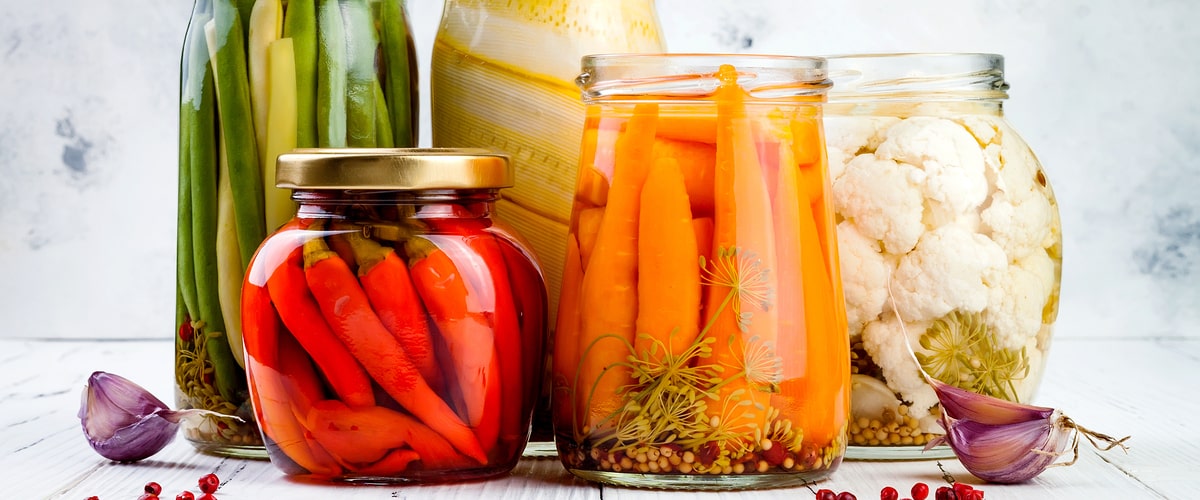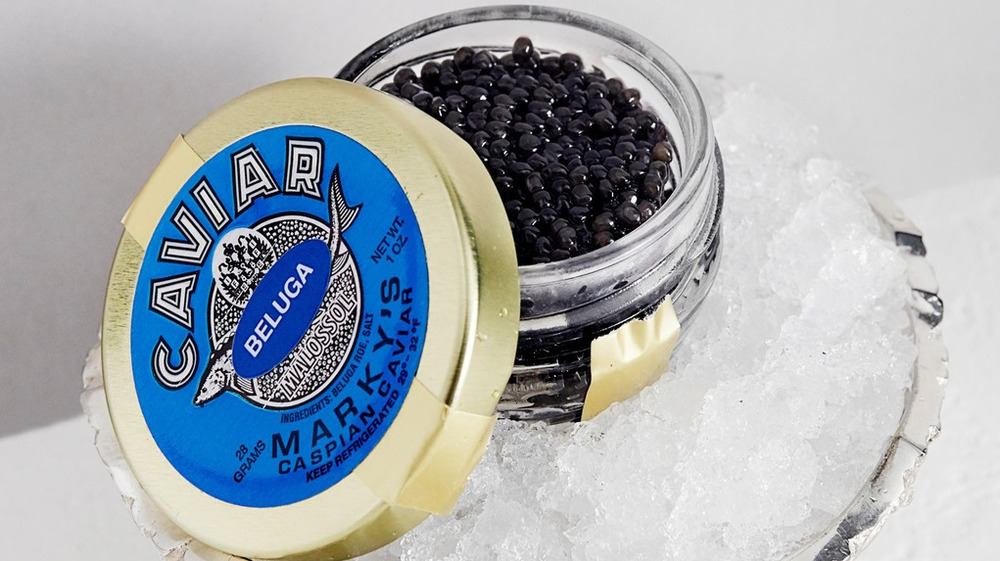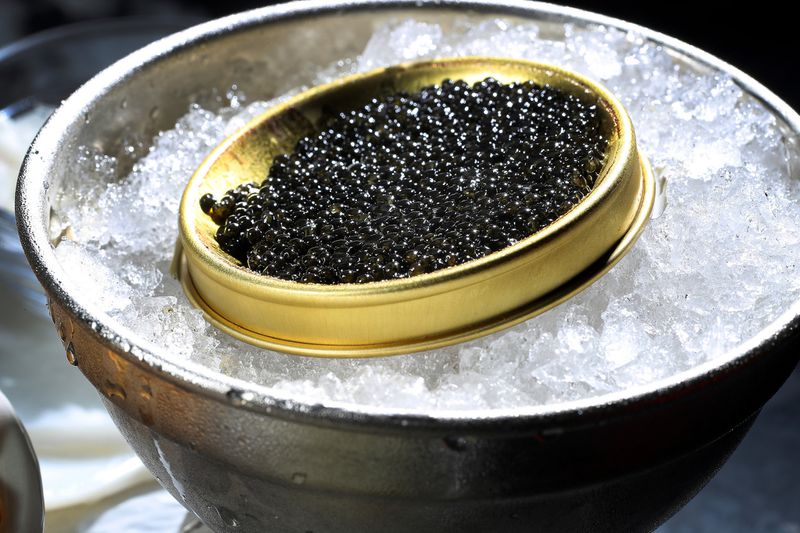The Health Benefits of Fermented Vegetables: Sauerkraut, Kimchi, and Pickles
Do you want to give your meals a nutrient-rich kick and throw in some probiotics for good measure? Look no further than the superfood of fermented vegetables—sauerkraut, kimchi, and pickles. Not only are these deliciously salty snacks packed with flavor but consuming them also provides your body with numerous health benefits due to their active cultures. Fermented vegetables are becoming increasingly popular amongst gourmet food consumers and aspiring home chefs who seek out creative opportunities to improve nutrition and well-being without compromising on taste!
An introduction to fermented vegetables and their health benefits

The ancient art of fermenting vegetables is making a comeback these days, and for good reason. Not only do fermented veggies taste amazing, they're also incredibly good for you. By fermenting vegetables, the bacteria naturally present in the veggies multiply and produce lactic acid. This lactic acid not only preserves the veggies, but it also promotes the growth of beneficial bacteria in your gut. These good bacteria help support a healthy digestive system and a strong immune system. Fermented veggies are also a great source of vitamins, minerals, and antioxidants, making them a great addition to a healthy diet. So why not give fermented vegetables a try? Your taste buds and your health will thank you.
Exploring the natural fermentation process of different vegetables
The art of fermentation has been around for thousands of years, and there's something almost magical about the process. From crisp cucumbers to spicy radishes, a wide variety of vegetables can be transformed through the natural fermentation process. Fermentation not only adds unique flavors, but it's also good for your gut. The process involves naturally occurring bacteria breaking down the sugars and starches within the vegetables, creating a tangy, delicious snack. With a little experimentation, you can explore the different flavors and textures that come with fermenting different types of vegetables. As you delve into the world of fermentation, you'll likely find your taste buds and digestive system thanking you for the journey!
The nutritional value of sauerkraut, kimchi, and pickles
When it comes to incorporating fermented foods into your diet, sauerkraut, kimchi, and pickles are some of the most nutrient-dense options out there. These tangy delights are loaded with beneficial bacteria, also known as probiotics, which can help with digestion and overall gut health. Sauerkraut, for example, is a rich source of vitamin C and K, as well as fiber. Kimchi, a Korean staple, contains vitamins A, B, and C, and is believed to have anti-inflammatory properties. Pickles get their nutritional punch from the cucumber base, providing a healthy dose of vitamin K, as well as antioxidants. So, whether you enjoy them as a savory snack or as a side dish with your meal, these fermented foods are worth incorporating into your diet for their impressive nutritional value and potential health benefits.
Tips for incorporating fermented vegetables into your diet
Are you looking for a healthy and delicious way to add variety to your meals? look no further than fermented vegetables! Not only do they have a unique, tangy flavor, they also have numerous health benefits. Fermenting vegetables not only preserves them, but also increases their nutrient density, making them a great addition to any diet. Try adding sauerkraut or kimchi to a salad or sandwich, or enjoy some pickled carrots as a crunchy snack. With a little creativity, you can easily incorporate fermented vegetables into your daily routine and reap the rewards of a healthier gut and immune system.
The importance of choosing high-quality ingredients for fermenting
Fermenting has been a staple practice for preserving foods for centuries. And as many health enthusiasts can attest, it is also a great way to add probiotics to your diet. But did you know that the quality of ingredients you choose can significantly affect the outcome of your fermentation? It's not just about getting the freshest produce or the cheapest options available. Choosing high-quality ingredients will result in a more consistent flavor profile and better overall nutrition. Your finished product will be packed with more beneficial bacteria and yeasts, and you'll be able to enjoy a delicious, wholesome product that your body will thank you for. So the next time you're planning to ferment something, make sure to invest in high-quality ingredients. You'll be amazed at the difference it can make!
Recipes for making homemade sauerkraut, kimchi, and pickles
If you're someone who loves to experiment in the kitchen with new flavors and techniques, then you absolutely must try making your own fermented foods. Sauerkraut, kimchi, and pickles are all incredibly easy to make at home, and the results are worth the wait. Not only do these ferments offer a delicious tangy flavor and satisfying crunch, but they are also packed with gut-healthy probiotics. Say goodbye to store-bought jars and hello to a world of creativity and flavor as you explore the wide variety of spices, vegetables, and brines that can be used to create your own signature fermentation recipes. Trust us, once you start, you won't be able to stop!
Sauerkraut Recipe
Ingredients:
-1 large head of cabbage (preferably green or red cabbage)
-2 tablespoons of sea salt
-2 tablespoons of caraway seeds (optional)
-2 teaspoons of juniper berries (optional)
Tools & Supplies:
-Large bowl for chopping the cabbage
-Sharp knife and cutting board for shredding the cabbage
-Large jar with a lid for fermenting your sauerkraut
Instructions:
- Begin by removing any wilted or discolored outer leaves from the head of cabbage. Then cut it into quarters, remove the core, and begin to finely shred the cabbage using a sharp knife or mandoline.
- Place the cabbage in a large bowl and sprinkle with sea salt. Use your hands to massage the salt into the cabbage for about 5 minutes, or until it begins to soften and release some of its liquid.
- Add any additional spices, such as caraway seeds or juniper berries (optional). Then transfer the salted cabbage to a Mason jar or other air-tight container, pressing down firmly on it as you go to remove any air pockets that might have formed during shredding and salting.
- The lid of your fermenting vessel should be slightly loose so that carbon dioxide can escape as your sauerkraut ferments. If necessary, place a small weight inside the jar to keep the cabbage submerged in its own liquid.
- Place your sauerkraut in a cool, dark place and allow it to ferment for at least two weeks before moving it to the refrigerator for longer storage.
- Enjoy your delicious homemade sauerkraut! It can be eaten as is or added to salads, sandwiches, and other dishes for a flavor-packed punch of nutrition. Bon Appetit!
Kimchi Recipe
Ingredients:
-1 large head of napa cabbage (about 3 pounds)
-¼ cup sea salt
-5 cloves of garlic, minced
-2 tablespoons fresh ginger, grated
-2 tablespoons gochugaru (Korean chili powder)
-1 tablespoon fish sauce (optional)
Tools & Supplies:
-Large bowl for chopping the cabbage
-Sharp knife and cutting board for shredding the cabbage
-Large jar with a lid for fermenting your kimchi
Instructions:
- Begin by removing any wilted or discolored outer leaves from the head of cabbage. Then cut it into quarters, remove the core, and begin to finely shred the cabbage using a sharp knife or mandoline.
- Place the cabbage in a large bowl and sprinkle with sea salt. Use your hands to massage the salt into the cabbage for about 5 minutes, or until it begins to soften and release some of its liquid.
- In a separate bowl, mix together garlic, ginger, gochugaru (Korean chili powder), and fish sauce (optional). Add this mixture to the salted cabbage and mix well until all ingredients are evenly distributed throughout the cabbage.
- Transfer the kimchi mixture to a Mason jar or other air-tight container, pressing down firmly on it as you go to remove any air pockets that might have formed during shredding and salting.
- The lid of your fermenting vessel should be slightly loose so that carbon dioxide can escape as the kimchi ferments. If necessary, place a small weight inside the jar to keep the cabbage submerged in its own liquid.
- Place your kimchi in a cool, dark place and allow it to ferment for at least three days before moving it to the refrigerator for longer storage.
- Enjoy your delicious homemade kimchi! It can be eaten as is or added to soups, stir-fries, noodles dishes, and other dishes for an extra flavor-packed punch of nutrition. Bon Appetit!
In conclusion, there are many ways to incorporate fermented vegetables into your diet and reap the health benefits of their nutritional value. Whether opting for store-bought products or making them at home, be sure to use the highest quality of ingredients. Doing so will ensure you get all the benefits from these probiotic-rich foods while minimizing any risk for contamination. Building up a repertoire of recipes is also an enjoyable way to experiment with fermentation and familiarize oneself with the different textures and flavors it produces. Who knows? You may even develop a cult following among family and friends with your delicious sauces and special blend of sauerkraut!






